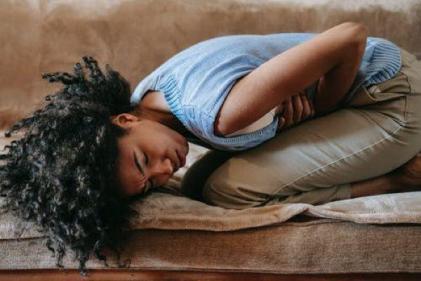While we’d like to think it’s always possible to keep our children safe, that’s not always completely possible. Every year, millions of children get themselves into potentially fatal situations, whether it’s choking on food, falling off a jungle gym, or becoming unconscious for no clear reason. Knowing what to do in these types of situations really is a matter of life and death, as emergency services aren’t always able to respond quickly enough.
If your child is choking, you will be able to tell because he or she will be unable to breathe, or to cry or talk. His or her skin may also discolour, turning blue or red, and there may be strange noises, almost like gagging.
If your child is choking, you need to dislodge whatever object has lodged in his or her throat. If there is some gagging or other noises, then it means that the airway is only partially blocked. In this case, coughing should dislodge the object that is blocking part of the airway, so encourage your toddler to cough.
If your child is not making any sound, then you will need to call emergency services immediately, and begin the process of attempting to clear the airway. If your child is still conscious, kneel behind him or her, place one arm diagonally across the chest area, and give five firm blows between the shoulder blades with your other hand. If this does not dislodge the object, then move your hand down to your child’s waist area, make a fist, and place your thumb on the abdominal area, quite far below the breastbone. Give five quick thrusts, bringing your clenched fist backward, towards the back bone. Make sure that your thrusts and blows are firm, and continue until the object is dislodged.
If your child is already unconscious, or lapses into unconsciousness while you are attempting the blows and thrusts above, place your child on his or her back on the floor, and place the heel of your hand on the end of the sternum or breast bone, and the other on top of that. Give 30 quick thrusts, check your child’s mouth for any objects that may be there, and then follow that with two rescue breaths. If your child’s chest does not inflate with the breaths, return to the thrusts, giving another 30, before attempting to give your child another two rescue breaths. Continue until your child is breathing, or until emergency services arrive.
Performing CPR on children is also a critical skill for parents, and it differs slightly from CPR on an adult. While this article can help, it’s worth checking whether there are any child CPR courses in your area.
If you suspect that your child is unconscious, and has stopped breathing, take ten seconds to assess whether he or she is breathing.
If you can’t tell whether your child is unconscious or not, give him or her a tap on the shoulder, and call your child’s name. If there is no response, then you need to call emergency services, and begin CPR.
Check whether your child is bleeding, and treat any wounds before you start CPR. Move your child to a firm, flat surface, and then tilt your child’s head back slightly, lifting the chin at the same time. This will ensure that your child’s airway is open.
Hold your cheek against your child’s mouth and nose. If there is any breathing, even if it’s shallow, you should be able to feel the breath on your cheek.
If there is no sign of breathing, then pinch your child’s nose closed, and give two gentle, one second breaths. Check whether your child’s chest inflates. If it does not, then his or her airway is blocked. If the breaths do go in, then there’s no need to administer first aid for choking. Continue to give your child two more gentle rescue breaths pausing in between to allow the air to escape.
If there’s no sign of breathing, then give your child 30 chest compressions as described above. Follow the compressions with another two rescue breaths, and continue until your child starts breathing, or emergency services arrive.
CPR and choking first aid can be life saving skills, if done correctly. However, they can be dangerous when they are done incorrectly, which is why it’s always best to get professional first aid training.
If your child is choking, you will be able to tell because he or she will be unable to breathe, or to cry or talk. His or her skin may also discolour, turning blue or red, and there may be strange noises, almost like gagging.
If your child is choking, you need to dislodge whatever object has lodged in his or her throat. If there is some gagging or other noises, then it means that the airway is only partially blocked. In this case, coughing should dislodge the object that is blocking part of the airway, so encourage your toddler to cough.
If your child is not making any sound, then you will need to call emergency services immediately, and begin the process of attempting to clear the airway. If your child is still conscious, kneel behind him or her, place one arm diagonally across the chest area, and give five firm blows between the shoulder blades with your other hand. If this does not dislodge the object, then move your hand down to your child’s waist area, make a fist, and place your thumb on the abdominal area, quite far below the breastbone. Give five quick thrusts, bringing your clenched fist backward, towards the back bone. Make sure that your thrusts and blows are firm, and continue until the object is dislodged.
If your child is already unconscious, or lapses into unconsciousness while you are attempting the blows and thrusts above, place your child on his or her back on the floor, and place the heel of your hand on the end of the sternum or breast bone, and the other on top of that. Give 30 quick thrusts, check your child’s mouth for any objects that may be there, and then follow that with two rescue breaths. If your child’s chest does not inflate with the breaths, return to the thrusts, giving another 30, before attempting to give your child another two rescue breaths. Continue until your child is breathing, or until emergency services arrive.
Performing CPR on children is also a critical skill for parents, and it differs slightly from CPR on an adult. While this article can help, it’s worth checking whether there are any child CPR courses in your area.
If you suspect that your child is unconscious, and has stopped breathing, take ten seconds to assess whether he or she is breathing.
If you can’t tell whether your child is unconscious or not, give him or her a tap on the shoulder, and call your child’s name. If there is no response, then you need to call emergency services, and begin CPR.
Check whether your child is bleeding, and treat any wounds before you start CPR. Move your child to a firm, flat surface, and then tilt your child’s head back slightly, lifting the chin at the same time. This will ensure that your child’s airway is open.
Hold your cheek against your child’s mouth and nose. If there is any breathing, even if it’s shallow, you should be able to feel the breath on your cheek.
If there is no sign of breathing, then pinch your child’s nose closed, and give two gentle, one second breaths. Check whether your child’s chest inflates. If it does not, then his or her airway is blocked. If the breaths do go in, then there’s no need to administer first aid for choking. Continue to give your child two more gentle rescue breaths pausing in between to allow the air to escape.
If there’s no sign of breathing, then give your child 30 chest compressions as described above. Follow the compressions with another two rescue breaths, and continue until your child starts breathing, or emergency services arrive.
CPR and choking first aid can be life saving skills, if done correctly. However, they can be dangerous when they are done incorrectly, which is why it’s always best to get professional first aid training.












